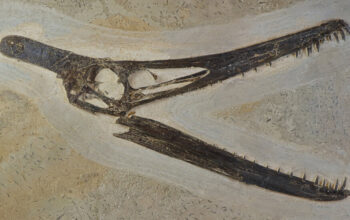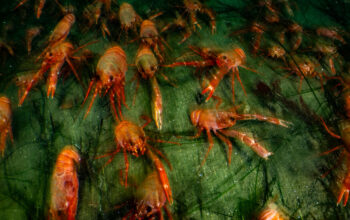
Thousands of colossal southern right whales travel to the calm waters of Península Valdés off the coast of Argentina each year to breed and give birth. The cetaceans, which can reach 56 feet in length, are a sight to behold, especially with their calves in tow. But if you venture out to see them, you may sometimes find your stomach turning for a reason that has nothing to do with sea sickness.
For the past 50 years, the kelp gulls of Peninsula Valdés have been mercilessly pecking at any southern right whale that dares to swim to the surface to breathe. The birds gorge on skin and blubber ripped from the whales’ backs. Over the past few decades the problem has escalated, and is now so severe that it’s causing young southern right whale calves to die prematurely, according to a study published Wednesday in the journal Biology Letters.
While kelp gulls and other seabirds have been known to occasionally pilfer flesh (and even eyeballs) from marine mammals, the study found that the number of southern right whale calves dying before their first birthday has increased in recent decades, as has the frequency and severity of the wounds the gulls inflict upon them.
“It’s really sad to see,” said Macarena Agrelo, a marine ecologist at the Federal University of Santa Catarina in Brazil and an author of the study.
Although southern right whales and kelp gulls have long lived alongside one another, their relationship took a bizarre turn in the 1970s. Until then, the birds seemed content to feed on the sheets of skin the whales regularly shed naturally. Somehow the birds realized they could get more satisfying morsels by going straight to the source. And since then, the birds have been passing this knowledge from generation to generation.
“The attacks are very painful and cause large, deep lesions, particularly on the backs of young calves,” said Mariano Sironi, scientific director of the Instituto de Conservación de Ballenas in Argentina and co-author of the study. While some of the pecks are small, he said, “in the most extreme cases, the largest wounds can cover a big portion of the calves’ back and can be one meter long or even bigger.”
At first, the gulls attacked both calves and adults, but over time the adults have changed the way they surface for air, arching their backs so that only their heads leave the water. Young whales are unable to do this.
The constant attacks by kelp gulls not only cause young southern right whale calves to endure painful injuries but also interfere with their abilities to rest and to nurse. That, combined with other stressors, is causing young southern right whales to die prematurely.
After analyzing thousands of documented sightings and aerial photographs collected from 1970 through 2017, the researchers found that the number of injuries sustained by young southern right whales in Península Valdés has increased around tenfold in the past two decades. Over that same time period, they have linked a decrease in calf survival with the severe injuries inflicted by the birds.
“The fact that gull harassment is causing population-level impacts on these whales is pretty surprising,” said Matthew Leslie, a conservation biologist with the U.S. Geological Survey who was not involved with the study.
Once on the brink of extinction, the southern right whale has recovered since hunting it was banned in 1935. However, as is the case for nearly all whales today, that recovery is threatened by declining food sources, regular entanglements in fishing gear and ship strikes.
“For these whales, it’s death by 1,000 cuts,” Dr. Leslie said, “and these gulls are adding one more cut.”
The scientists behind the study argue that humans are partially to blame for the Patagonian whales’ plight, pointing to poorly managed landfills and the waste created by fishing fleets, which increase the kelp gull population.
“By providing scientific evidence that gull attacks have an impact on whale survival, we hope that people can change attitudes and get more involved in improving waste management,” Dr. Sironi said.



